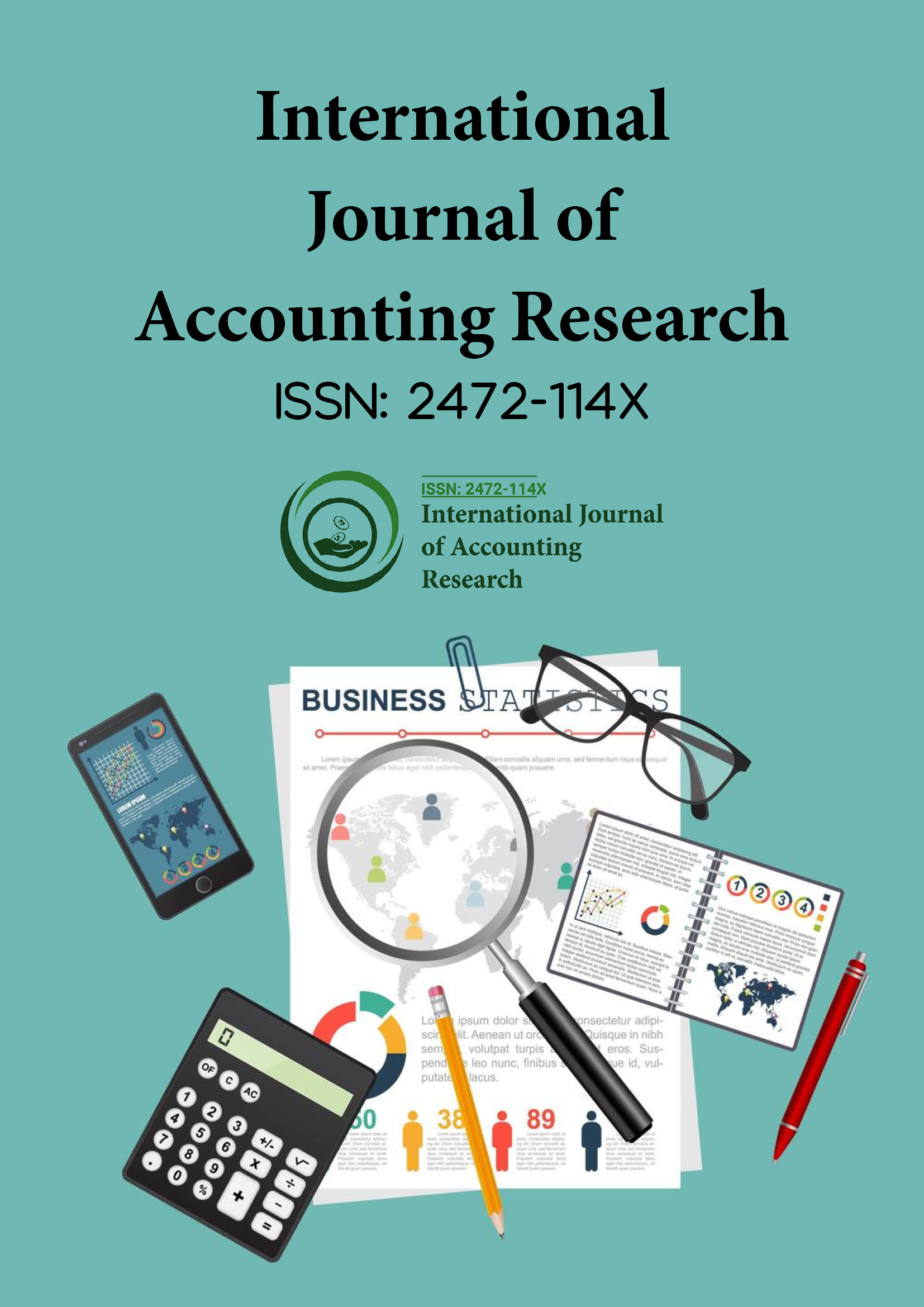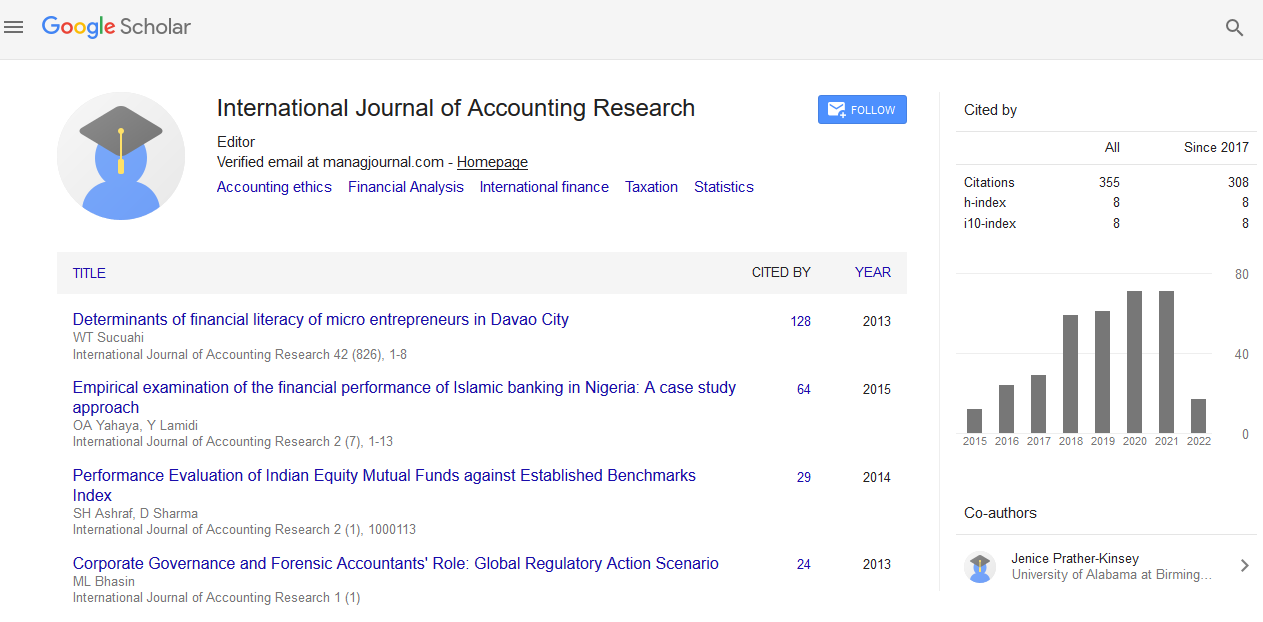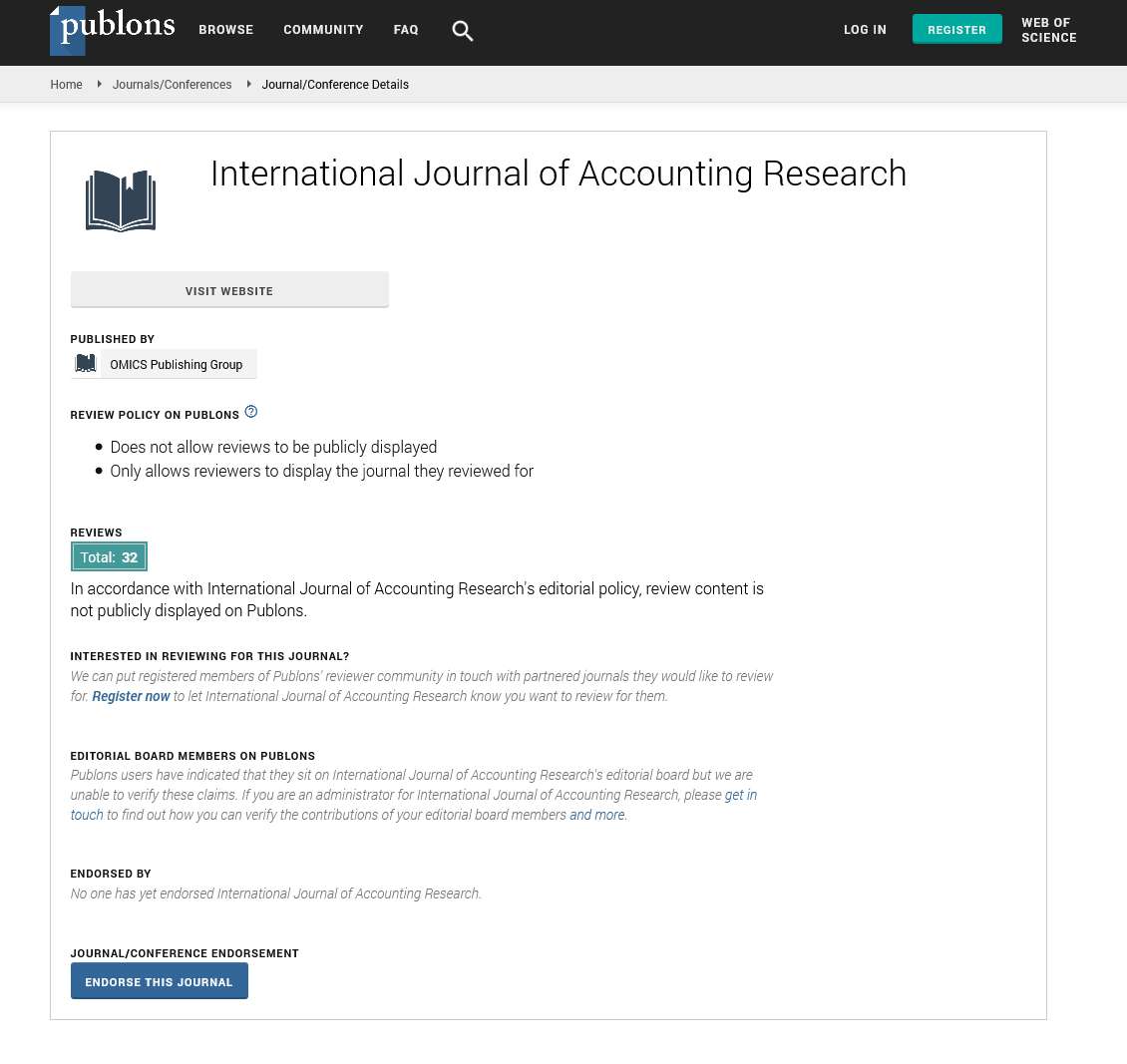Indexed In
- Open J Gate
- RefSeek
- Hamdard University
- EBSCO A-Z
- Scholarsteer
- Publons
- Euro Pub
- Google Scholar
Useful Links
Share This Page
Journal Flyer

Open Access Journals
- Agri and Aquaculture
- Biochemistry
- Bioinformatics & Systems Biology
- Business & Management
- Chemistry
- Clinical Sciences
- Engineering
- Food & Nutrition
- General Science
- Genetics & Molecular Biology
- Immunology & Microbiology
- Medical Sciences
- Neuroscience & Psychology
- Nursing & Health Care
- Pharmaceutical Sciences
Perspective - (2025) Volume 13, Issue 2
Artificial Intelligence in Forensic Accounting: Opportunities and Ethical Challenges
Priya Menon*Received: 30-May-2025, Manuscript No. IJAR-25-29569; Editor assigned: 02-Jun-2025, Pre QC No. IJAR-25-29569 (PQ); Reviewed: 16-Jun-2025, QC No. IJAR-25-29569; Revised: 23-Jun-2025, Manuscript No. IJAR-25-29569 (R); Published: 30-Jun-2025, DOI: 10.35248/2472-114X.25.13.420
Description
Artificial Intelligence (AI) has made significant strides in recent years, impacting multiple sectors, including healthcare, manufacturing, logistics, and finance. Within the accounting profession, AI has begun to reshape traditional practices by automating repetitive tasks, analyzing vast datasets with precision, and providing predictive insights. One particular area where AI demonstrates remarkable promise is forensic accounting. The detection of fraud, financial irregularities, and corporate misconduct requires a combination of analytical rigor and professional skepticism. AI introduces new possibilities in this domain, enabling forensic accountants to investigate more efficiently, but also raising critical questions about ethics, privacy, and accountability.
Forensic accounting is often associated with detecting fraud such as asset misappropriation, financial statement manipulation, or bribery schemes. Traditionally, investigators relied on manual audits, sampling, and interviews to uncover discrepancies. These methods, while effective in certain contexts, are time-consuming and prone to oversight. AI-powered algorithms, however, can process millions of transactions in seconds, identifying suspicious patterns that may escape human observation. Machine learning models can be trained to recognize common fraud indicators such as round-dollar transactions, repeated vendor payments, or unusual journal entries near reporting deadlines. By continuously learning from historical fraud cases, AI can enhance its predictive capabilities, making it a powerful ally for forensic accountants.
Another major advantage of AI in forensic accounting is anomaly detection. Many frauds remain hidden because they are carefully designed to appear normal. However, AI can analyze multiple dimensions simultaneously, including transaction frequency, timing, and relationships between accounts, to highlight outliers. For example, if an employee consistently approves payments to a vendor with no verified address, AI systems can flag the activity for review. Similarly, sentiment analysis of employee emails or financial disclosures can help detect tone inconsistencies or deceptive language associated with fraudulent activity. This ability to examine both structured and unstructured data offers a more holistic approach to fraud detection.
Despite these advantages, ethical concerns surround the integration of AI into forensic accounting. One issue is the potential for algorithmic bias. If the datasets used to train AI are skewed, the system may disproportionately flag transactions from certain vendors, employees, or regions, leading to false accusations. In a sensitive field like forensic accounting, such biases could harm reputations and cause legal complications. Another ethical challenge relates to privacy. AI systems often rely on analyzing personal communications, banking records, and sensitive corporate data. While these practices are justified in fraud investigations, they risk violating individual privacy rights if not managed responsibly.
Forensic accountants cannot blindly rely on machine outputs without applying professional judgment. Overreliance on AI may lead to false positives or negatives, undermining the credibility of investigations. Therefore, AI should be viewed as a tool that augments human expertise rather than replacing it. Professional bodies and regulators must establish guidelines for ethical AI use in forensic accounting to balance efficiency with fairness.
In addition to ethical concerns, technical limitations also exist. Fraudsters are becoming increasingly sophisticated, often using AI themselves to design schemes that evade detection. This creates a cat-and-mouse game where forensic accountants and fraudsters continuously adapt to one another. Furthermore, AI systems require substantial investment in infrastructure, training, and data management. Small and medium-sized enterprises may find it difficult to deploy advanced AI tools, creating a gap in fraud detection capabilities between large corporations and smaller firms.
Nonetheless, the benefits of AI in forensic accounting cannot be dismissed. By automating routine tasks, forensic accountants can focus on higher-order analysis and investigative strategy. Instead of manually reconciling transactions, professionals can interpret AI findings, connect the dots across different evidence sources, and provide strategic recommendations to management and regulators. In this way, AI enhances the role of forensic accountants, allowing them to deliver greater value in preventing financial crime.
Citation: Menon P (2025). Artificial Intelligence in Forensic Accounting: Opportunities and Ethical Challenges. Int J Account Res.13:420.
Copyright: © 2025 Menon P. This is an open access article distributed under the terms of the Creative Commons Attribution License, which permits unrestricted use, distribution, and reproduction in any medium, provided the original author and source are credited.


